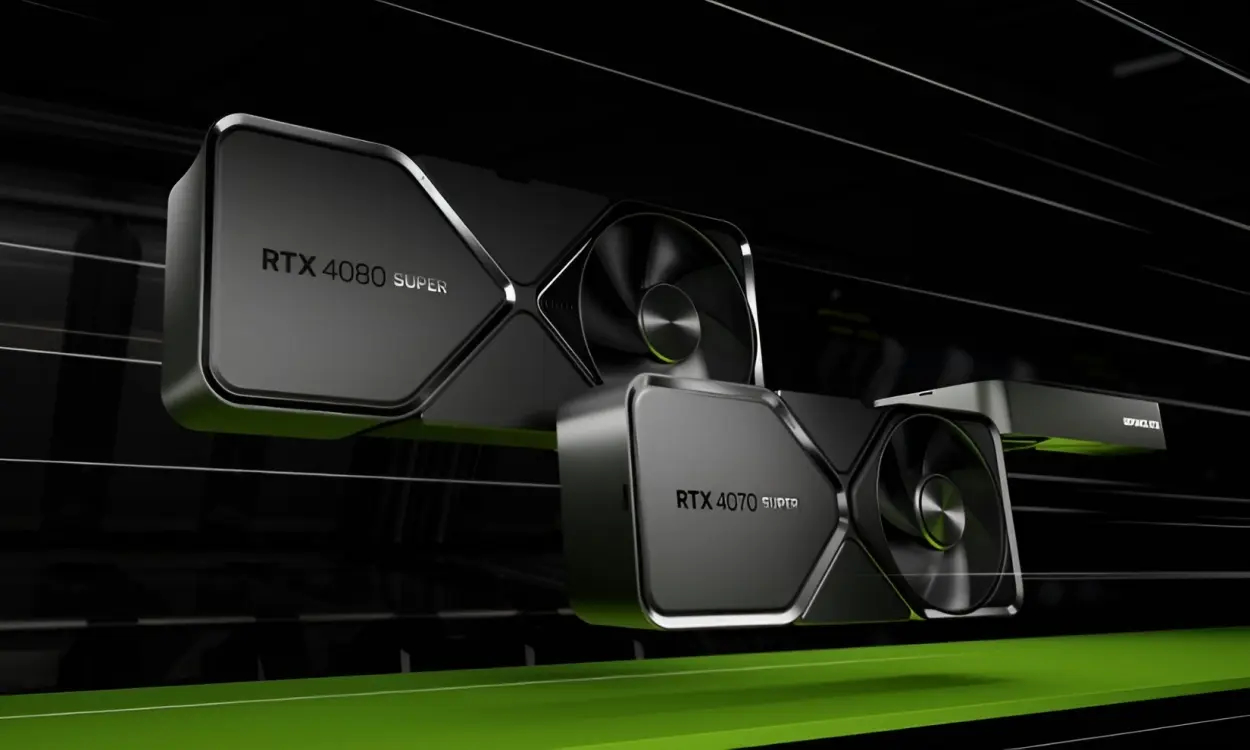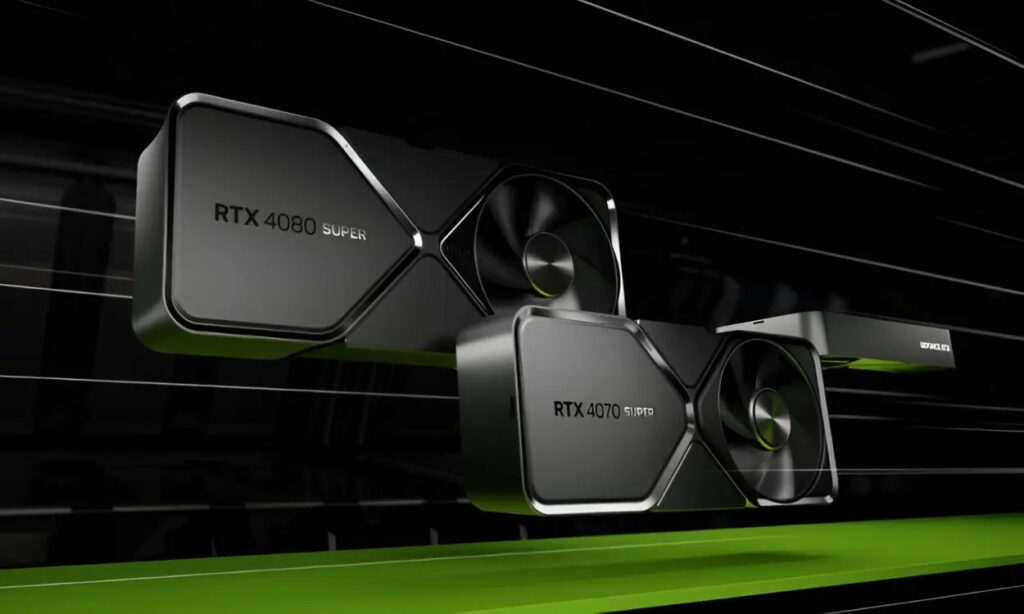
After extensive discussions, speculation, and leaks over the past months, the RTX Super series has officially made a comeback. Nvidia has introduced its latest RTX 40 Super lineup at CES 2024, featuring the RTX 4080 Super, RTX 4070 Ti Super, and RTX 4070 Super. Following the tradition of the Super refresh, this new lineup promises enhanced performance with slight upgrades in specifications.
In addition to the performance boost, Nvidia has also adjusted the pricing for its high-end 80-class offering, the RTX 4080 Super, which will now serve as the official replacement for the previous model in Nvidia’s RTX 40 lineup for 2024. Let’s delve into the specifications of each card and explore the performance improvements before discussing pricing and availability.
How Fast Is RTX 40 Super? All Variants & Specifications Detailed
Nvidia has introduced the latest RTX 40 Super cards, maintaining the Ada Lovelace architecture and incorporating 4th Gen Tensor Cores and 3rd Gen RT Cores. Notably, the RTX 4070 Ti Super showcases an enhanced VRAM capacity of 16GB GDDR6X, surpassing the previous 12GB configuration on the RTX 4070 Ti.
Meanwhile, the other additions to the RTX 40 lineup retain the same memory capacity. The RTX 4080 Super features the world’s fastest graphics memory at 16GB GDDR6X, mirroring the configuration of the preceding RTX 4080. The RTX 4070 Super maintains a 12GB GDDR6X graphics memory capacity.

An RTX 4080 Super Founders Edition is set to be available, featuring Nvidia’s dual axial flow design that was initially introduced with the RTX 3080. Additionally, the RTX 4070 will also have a Founders Edition variant. However, the RTX 4070 Ti Super will not have a Founders Edition and will be exclusively available as an AIB-only card.
In conjunction with the Founders Edition variant, numerous RTX 40 Super GPUs will be launched by Nvidia’s partners, including MSI, Gigabyte, Asus, and other manufacturers.
RTX 40 Super vs Non-Super Cards: Specifications Compared
NVIDIA RTX 4080 Super vs RTX 4080
Dubbed ‘Ada Perfect‘ by Nvidia, the RTX 4080 Super showcases its capabilities by leveraging the full potential of the Nvidia AD103 GPU. Boasting 10,240 CUDA cores, a 5% increase over the RTX 4080’s 9,728 cores, it also features faster memory, clocked at 23Gbps compared to the non-Super 4080’s 22.3Gbps.
In terms of performance enhancement compared to the non-Super variants, the RTX 4080 Super demonstrates an average speed boost of around 2%, reaching up to 5% faster in select optimal scenarios compared to the RTX 4080. All cards within the lineup will include dual encoder support, a feature Nvidia notes as widely appreciated.
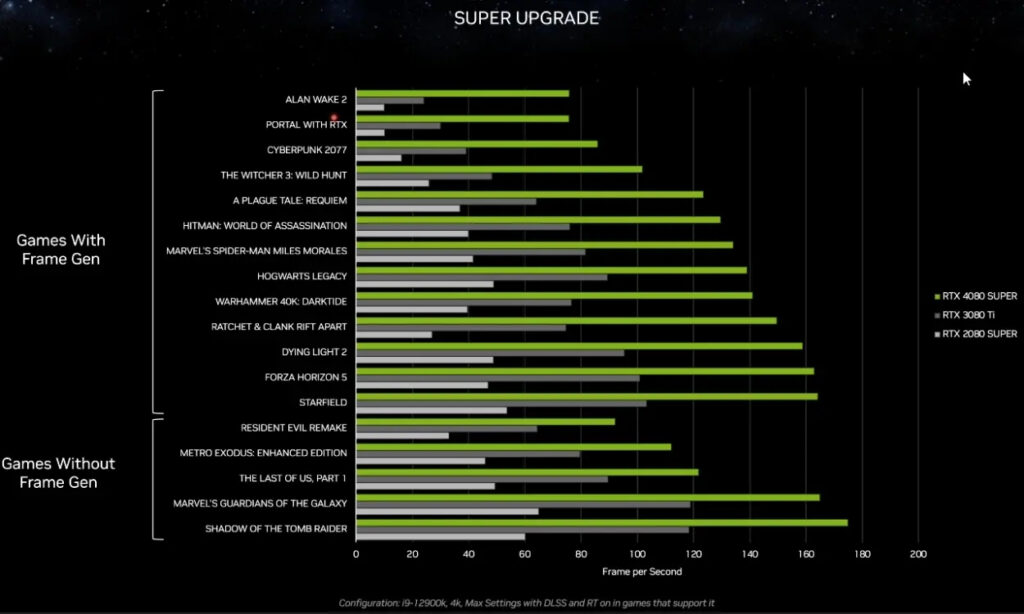
Relative to the previous generation, the RTX 4080 Super exhibits a 1.4x speed improvement over the RTX 3080 Ti in games without DLSS 3, doubling its speed with the activation of AI frame generation technology. Additionally, it is 1.5x faster in Stable Diffusion video generation.
NVIDIA RTX 4070 Ti vs RTX 4070 Ti Super
Nvidia has unveiled the RTX 4070 Ti Super, featuring a commendable VRAM upgrade of 16GB G6X. This enhanced Super card is positioned as more future-proof for upcoming games that will leverage the higher VRAM capacities prevalent in modern graphics cards. The additional 4GB frame buffer proves notably beneficial, even in the context of 1440p gaming, which the company is marketing it for.
The Super iteration of the RTX 4070 Ti introduces a 256-bit memory interface (compared to the non-Super’s 192-bit), along with 16GB GDDR6X video memory. Boasting 8,448 CUDA cores, the Super card exhibits a 10% increase in speed compared to the non-Super RTX 4070 Ti, which has 7,680 CUDA cores.

In terms of performance, Nvidia asserts that the RTX 4070 Ti Super achieves an average speed boost of up to 10% compared to the non-Super 4070 Ti, maintaining the same 85W TGP. In comparison to the previous generation, the all-new RTX 4070 Ti Super outpaces the RTX 3070 Ti in traditional rendering, showcasing a 1.6x speed improvement.
With DLSS 3 AI frame generation enabled in compatible games, Nvidia claims the RTX 4070 Ti Super can achieve up to 2.5x faster performance compared to the RTX 3070 Ti.
NVIDIA RTX 4070 Super vs RTX 4070
According to Nvidia, the RTX 4070 Super outpaces the RTX 3090 in speed, which is an enticing prospect, although some may have hoped for a higher VRAM capacity. The RTX 4070 Super shares the same 12GB GDDR6X memory as the RTX 4070.
However, the RTX 4070 comes with a more budget-friendly price tag, positioned as an excellent $549 graphics card for users who are willing to accept a slight performance trade-off compared to the Super variant. It notably performs faster than the RTX 3090 in various scenarios, including Raster and DLSS 2/3.
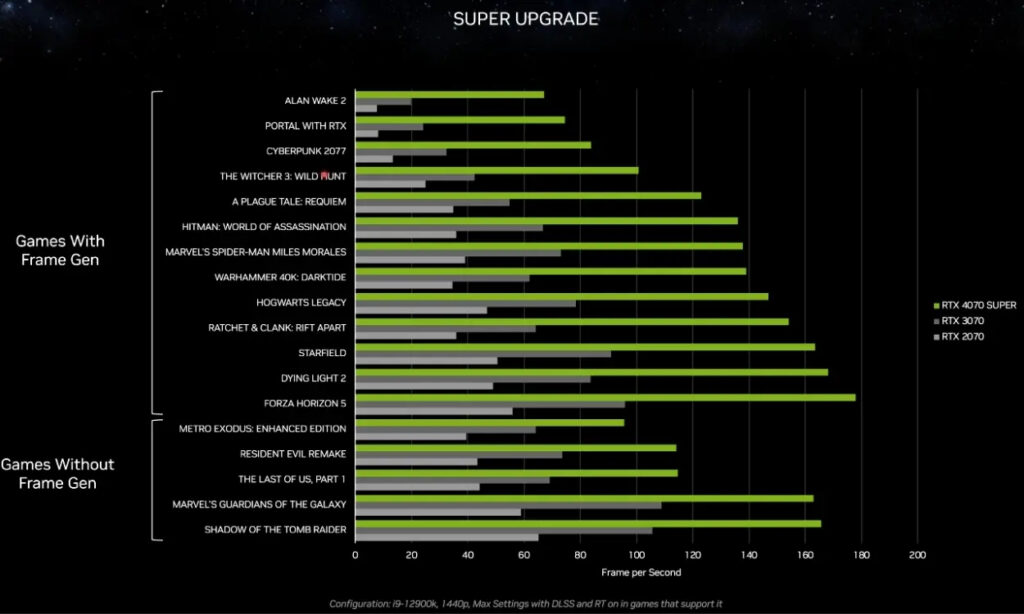
In terms of gaming performance, the RTX 4070 Super exhibits a 15% speed improvement (on average) compared to the non-Super 4070. It approaches the performance level of the RTX 4070 Ti, as mentioned by Nvidia. Additionally, detailed comparisons of the RTX 4070 Super GPU’s gaming performance against previous-generation GeForce graphics cards are available.
The new Super card features an increased Total Graphics Power (TGP) of 220W, marking a 20W increment over the non-Super variant. With 7,168 CUDA Cores, the RTX 4070 Super boasts a 20% increase compared to the RTX 4070’s 5,888 CUDA Cores.
RTX 40 Super GPUs: Price & Availability
Priced starting at $599, the Nvidia RTX 4070 Super will be the first to hit the market, with the higher-end variants set to be released up to two weeks after the initial card.
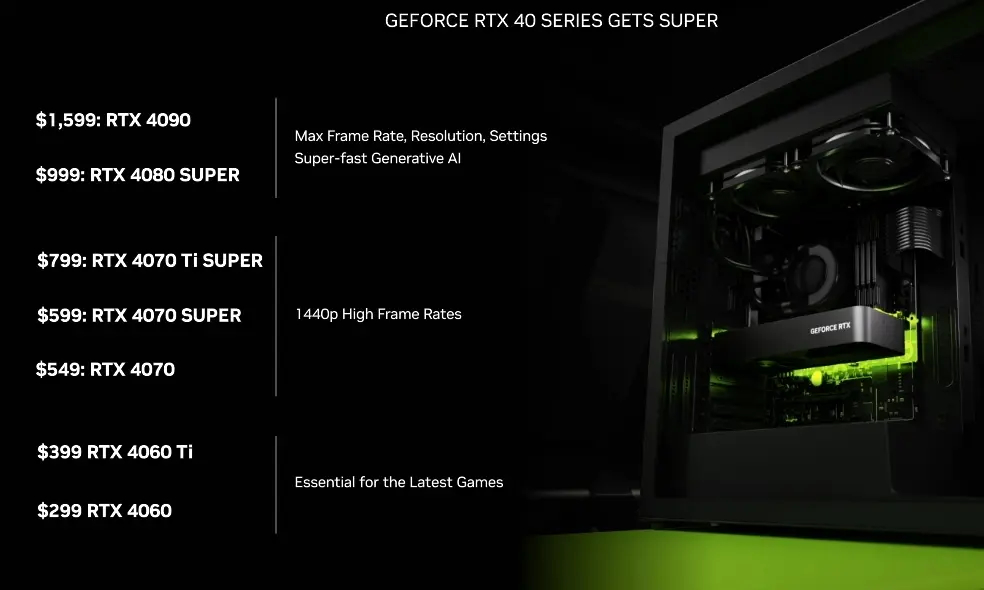
The RTX 4080 Super, priced at $999, is now 20% cheaper compared to the launch pricing of the RTX 4080. The RTX 4070 Ti Super maintains the same launch price as the RTX 4070 Ti, and a similar pricing strategy applies to the RTX 4070 Super. Detailed pricing for the new RTX Super GPUs is provided below:

Following the RTX 4070 Super’s launch, the RTX 4070 will be priced at $549, representing a $50 reduction from its original MSRP. Non-Super variants (RTX 4080/4070 Ti) will no longer be available for purchase, being replaced by their Super counterparts as part of Nvidia’s 2024 lineup. Keep an eye out for potential GPU deals, thanks to the updated RTX 40 Series pricing.
What are your impressions of Nvidia’s latest RTX 40 Super graphics cards? Which GPU do you find most compelling in the lineup? Let us know in the comments below.
